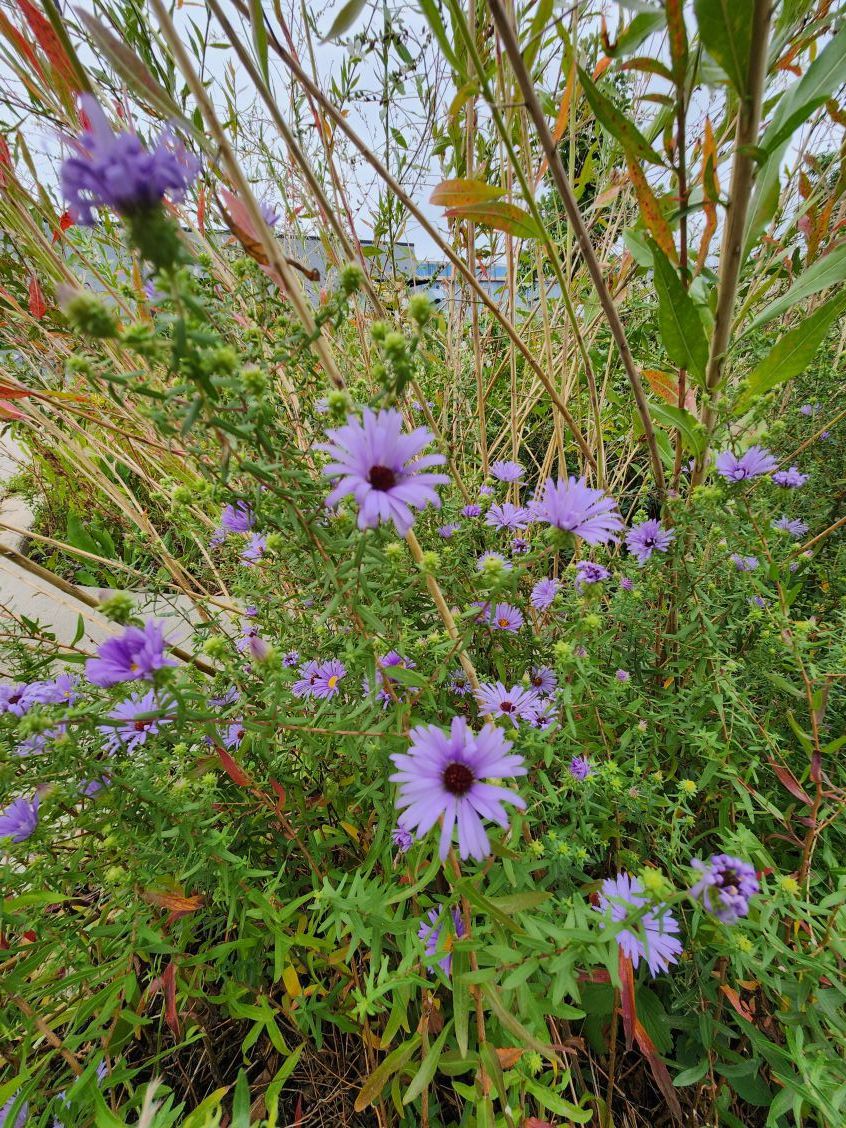Plant of the Week: Aromatic Aster
posted
Written by: Engineering Conservation Crew
Contrary to its common name, aromatic aster flowers have no distinct aroma, however crushing up their leaves will create a balsam-like smell! This is one of the last aster species to bloom in the fall. Some parts of the US have reported this plant blooming into November! The initial floral bloom is lavender-blue or purple and will mature into a brown or purplish hue.
Contrary to its common name, aromatic aster flowers have no distinct aroma, however crushing up their leaves will create a balsam-like smell! This is one of the last aster species to bloom in the fall. Some parts of the US have reported this plant blooming into November! The initial floral bloom is lavender-blue or purple and will mature into a brown or purplish hue.
Aromatic aster can grow up to 3 feet tall, but is often much smaller. This perennial’s rigid, fuzzy stems consist of many branches. Overtime, these branches form a compact, self-supporting mound. Many gardeners will use this species as a border around their landscape.
This species can be distinguished from other asters by its great number of ray florets per flower head (over 20)! The leaves are shorter and narrower than many other aster species. In general, aromatic aster has denser foliage and a bushier habit than other asters, which are usually more tall and lanky.
Many insects will visit this species in search of its nectar including long-tongued bees, short-tongued bees, butterflies, and skippers. The adorable native bee pictured is a bicolored striped sweat bee.
Furthermore, the foliage of the plant is eaten by caterpillars of the silvery checker spot butterfly. Game birds and mammals will also eat the seeds and foliage when they’re hungry enough, such as wild turkey, deer, and small rodents.
Each week during the growing season, the Engineering Division focuses in on a Plant of the Week to raise awareness of different plants in the field that benefit our environment. The Engineering crews in the field tasked with conservation share expert insight on these plants and their benefits each week in a creative way!


Furthermore, the foliage of the plant is eaten by caterpillars of the silvery checker spot butterfly. Game birds and mammals will also eat the seeds and foliage when they’re hungry enough, such as wild turkey, deer, and small rodents.
Each week during the growing season, the Engineering Division focuses in on a Plant of the Week to raise awareness of different plants in the field that benefit our environment. The Engineering crews in the field tasked with conservation share expert insight on these plants and their benefits each week in a creative way!


This content is free for use with credit to the City of Madison - Engineering and a link back to the original post.
